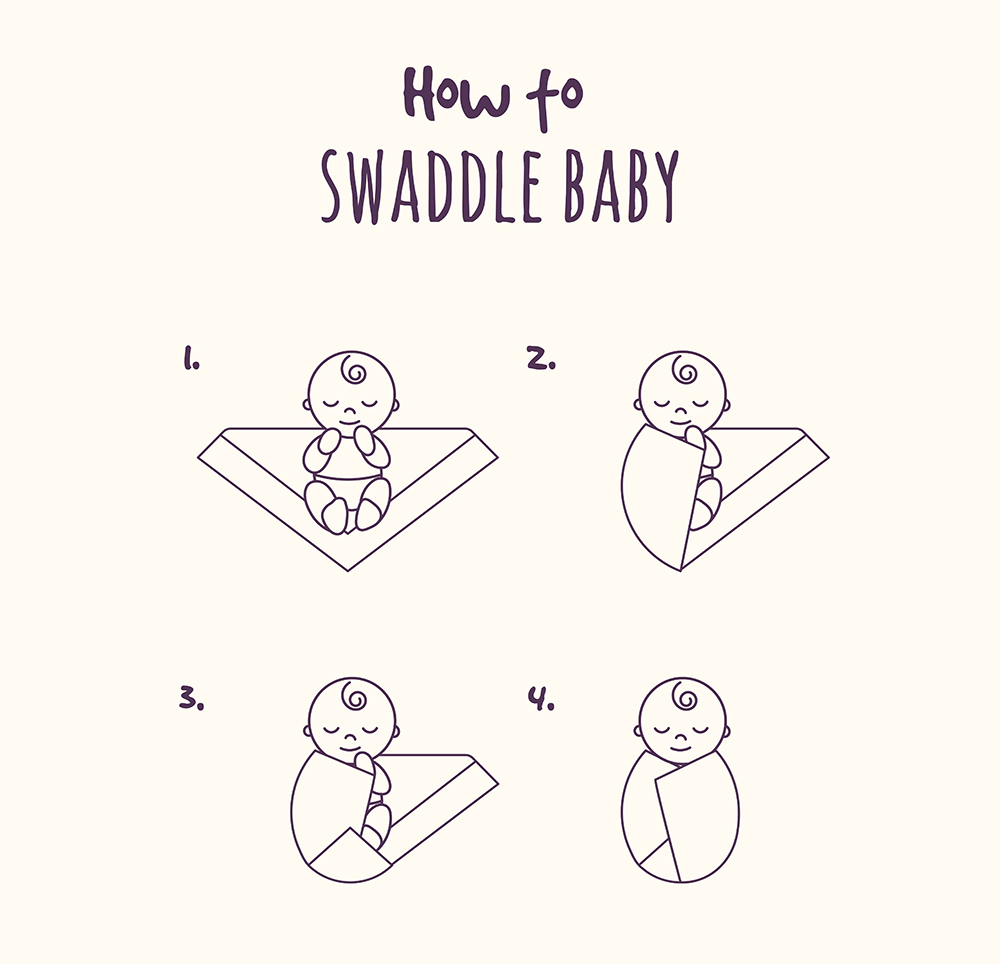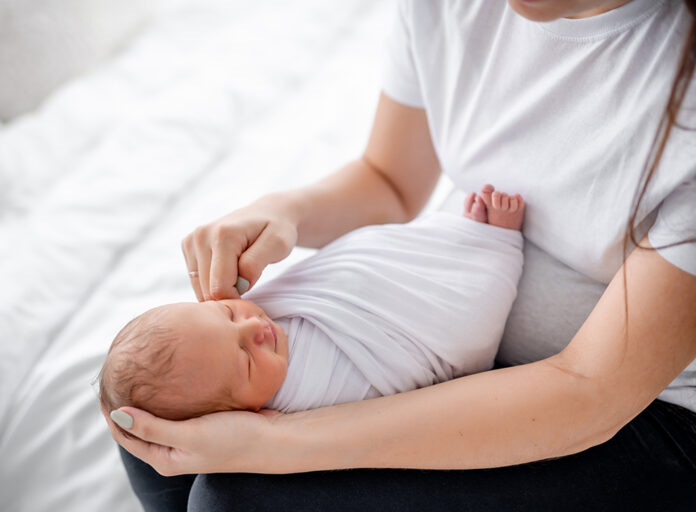This post is also available in: English
Swaddling is a traditional practice in which babies are wrapped in a blanket or fabric to help them feel safe and protected. Swaddling is very beneficial for babies.
It’s many advantages include:
1. An instant feeling of comfort for babies
Since swaddling replicates the experience of being in the womb, it immediately makes babies more comfortable. Swaddling keeps babies warm, especially in the early weeks when they have difficulty controlling their body temperature. It has also been seen that cranky babies often stop crying when swaddled.

Increase in quality and duration of sleep
Babies like to be held closely. The act of swaddling provides a warm cocoon for your baby and this can help babies sleep longer and more soundly. And we all know that when babies sleep more soundly, so do their moms.
3. Reduction of startle reflex
Until a baby is 2 months old, he or she can often get startled by a loud sound or movement. Most babies respond by throwing back their heads, extending out their arms and legs and crying, and finally pulling their arms and legs back in. Even a baby’s own cry can startle her or him and set off this reflex. Swaddling helps to reduce the startle response, which can cause babies to wake up unexpectedly. It reduces anxiety in your baby by simulating your touch, which teaches your infant to self-soothe.
4. How to swaddle your baby?

- Begin with a large, thin blanket or a swaddling blanket.
- Place the blanket in a diamond form on a flat surface and fold the top corner down.
- Position your infant on their back, neck and head above the folded edge. Wrap the blanket’s left corner around the baby’s torso, tucking it snuggly under the opposite arm.
- Fold up the bottom corner of the blanket, giving room for the baby’s legs to move. Finally, draw the blanket’s right corner over the baby’s body, tucking it underneath to tighten the wrap.
Precautions to take while swaddling
> Always put your baby to sleep on their back, never on their stomach or side.
> Check that the swaddle is not too tight.
> The baby’s hips and legs should be able to move freely.
> Swaddling should not cover the baby’s face or head.
> To avoid overheating, check the temperature of the room and don’t overdress the baby; lightweight, breathable fabrics are preferable.
When to stop swaddling?
Infants can be swaddled until they reach the age when they can roll over independently, which is usually about 2-4 months.
Also, if your baby has become very active and appears to want greater freedom to move his arms and legs, it may be time to stop swaddling.
PS. If swaddling doesn’t work for your little one, wearable blankets and sleep sacks are the perfect alternative!
This post is also available in: English










